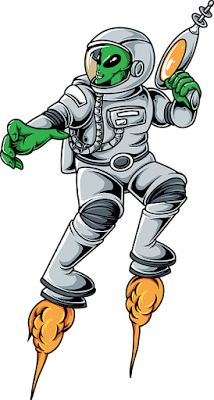 |
| Credit: Pixabay |
I apologise for the late posting. I didn’t start writing this week’s post until kind of last minute due to some sudden changes in plans. One of those involved finally getting to Encounters UFO Xperience UFO museum which I’ll have some photos from on my Instagram page soon, Keep looking out for them there. A couple weekends ago, I had the pleasure of hearing science fiction author Kim Stanley Robinson speak and wanted to share with you some interesting ideas he had about the genre. I also have a little bit on the progress of my upcoming book of short fiction, "Bad Apps". So, keep on readin'!
Kim Stanley Robinson Talk
Kim Stanley Robinson is world famous for his Mars trilogy of novels, but he’s also an author who's famous to my own local area. He resides in Davis CA, only 10 to 15 minutes away from my home. So, when I found out two Fridays ago that he was giving a talk at the Davis High School auditorium the very next day, I made sure to go.
An Evening of Science Fiction, sponsored by Stories On Stage Davis and the Yolo County Library, featured a reading of Robinson’s short story, "Arthur Sternbach Brings the Curveball to Mars". It was a really well written story and the reader, Tim Gaffaney, did a good job reading it. However, it was a little hard for me to understand in some parts since I don't follow baseball. That said, it was about a baseball game on the red planet played on a giant baseball diamond by giant Martians. That is, not the San Francisco Giants' baseball diamond or the team, but literal giants! Well, sort of. The Martians weren’t gargantuan where they could trample over cars and buildings, that would be a little out of Robinson's realist style of science fiction. They were simply taller than the Earthling narrator as a result of Mars's atmosphere. Speaking of which, the plausible scientific aspects of how Mars’s atmosphere influenced the game made the story really interesting.
After the reading, Robinson talked about how the story was influenced by his own experience with sports, and then he answered questions from the audience. Some of those answers were really interesting, especially those that included his ideas about what science fiction is. First of all, he said that science fiction is not merely about the future but also about the present time that it's written in. So, he discussed how his Mars trilogy was a reflection of the 1990s that it was written in and the decade’s issues that it was a response to.
Then someone asked him what genre prehistoric fiction falls within. Robinson answered that it falls within science fiction. He explained that, because we can't access prehistory like we can history--and, therefore, records written by past societies--we can only speculate how these prehistoric people lived. So, in order to speculate on prehistoric peoples, fictional characters of them must be created.
Then he talked about lightspeed technology in science fiction such as “Star Trek” and “Star Wars”. Because he believes that lightspeed is too unlikely to be achieved in space travel, the science fiction that uses it is actually space fantasy. I slightly disagree with him about this, because there have been so many achievements made in science that people years ago never could conceive of happening such as humans going to the moon. So, maybe lightspeed travel may not likely happen in the foreseeable future, but that doesn't mean it never will.
Because Kim Stanley Robinson is a hard science fiction writer, he is more skeptical of what the more imaginative and more escapist science fiction depicts. But this is not necessarily a bad thing since a more realistic and more pragmatic view of sci-fi may help us better determine our societies' futures and make better humanitarian achievements sooner rather than later.
Book In Progress
I just finished a rewrite to one of my stories for my upcoming book of science fiction horror, "Bad Apps". Now I'm reading through it to work in the character details and fix any plot structure problems. This story is about a teenage cult following of a fantasy video game, a game that leads to the grisly murders of adults. For more details of my work on "Bad Apps", sign up for my free author's newsletter, "Night Creatures' Call"!
That's all for this week. I have family coming from out of town this week so I may have to postpone next Monday’s Book-To-Movie review to the following week. However, I’ll do my best to post something next Monday. Have you read anything by Kim Stanley Robinson?
Until next time . . .
Comments
Post a Comment